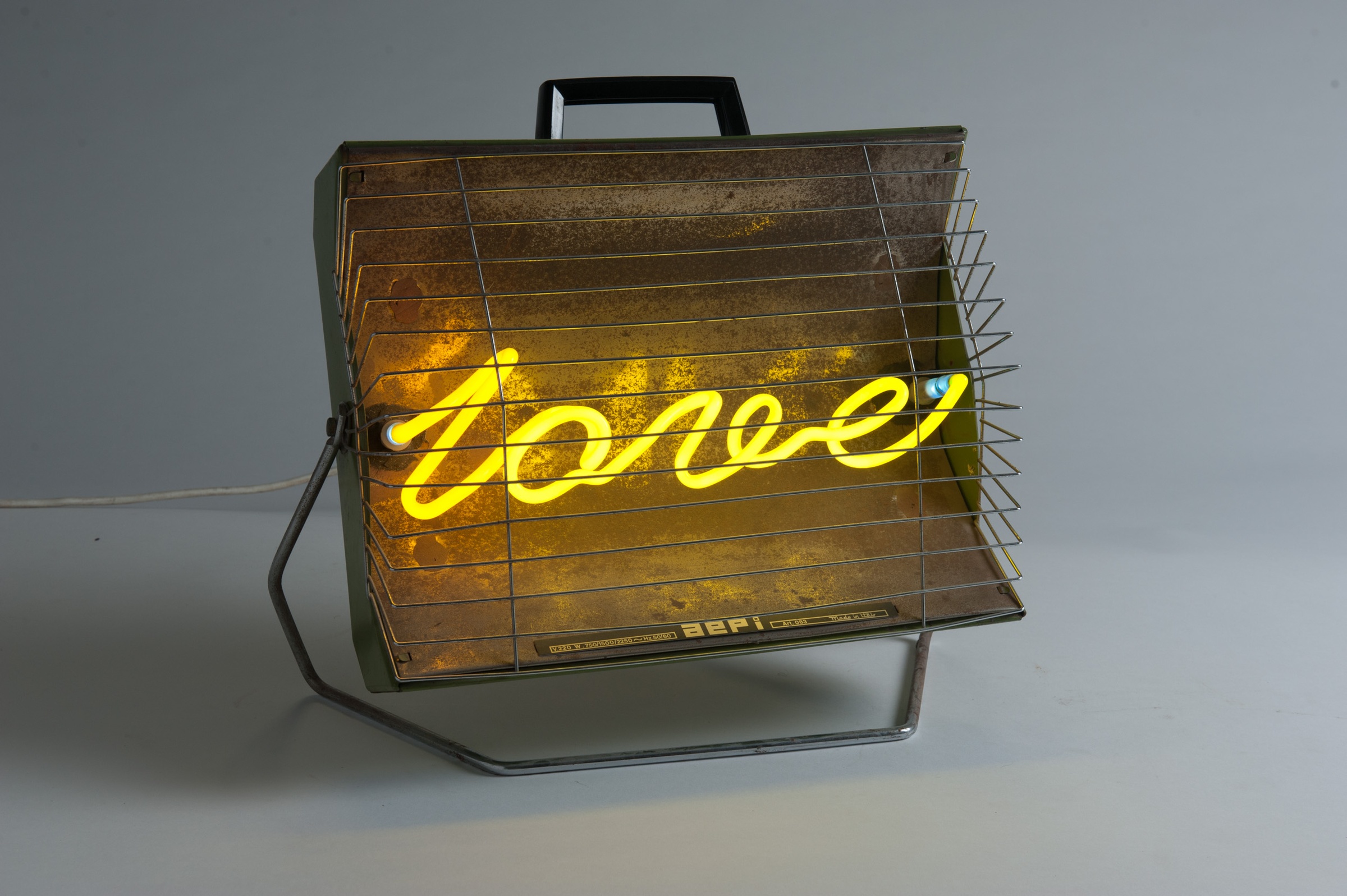Sigalit Landau

Is Neon Oven Love Y warming, or a warning? A playful, cursive script spells out ‘love’ in bright, attractive yellow. This is the love of sunflowers in summer felt by carefree youth. Except that it occurs locked behind a heater whose metal grille warns that a tetanus shot wouldn’t go amiss should the approach be too close, too sudden. Were one to avoid being caught on the spikes, there’s always the risk of electrocution. Is the fate of love a tragic one? Do these letters warrant rescuing? Is all love self-sabotage; self-immolation?
As W.H. Auden benevolently wrote:
How should we like it were stars to burn
With a passion for us we could not return?
If equal affection cannot be,
let the more loving one be me.
b.1969, Jerusalem
In Seven Gothic Tales (1934), Karen Blixen, writing as Isak Dinesen, has her character “know the cure for everything. Salt water…in one way or the other. Sweat, tears, or the salt sea.” Wars, those ancient and more recent, have been fought over salt. In contemporary history, a march named for salt remains one of the most famous incidents of nonviolent civil disobedience against colonial rule. Salt – its capacities to buoy, preserve, desiccate, transform – is a preoccupation of the artist Sigalit Landau. So is sand, for the artist grew up “on a hill overlooking the Judean desert, the skyline of Jordan, and the northern part of the Dead Sea.” There’s a reason sci-fi films make use of salt pans, sand dunes, and the sea as the locations for dystopian fantasies set on other planets. These are other-worldly environments on Earth that test the limits of human understanding while revealing our vulnerabilities. The sea is too deep, the desert too harsh, salt too potent a dehydrator. Landau’s work with salt explores understandings of home and belonging in contested environments. The Dead Sea extends to touch territories whose inhabitants remain locked in conflict while connected by its extreme minerality and unique qualities. Working across video, sculpture, photography, and installation, Landau trained as a dancer before studying design, her practice a form of alchemy that recasts the mundane as extraordinary; a material to spiritual metamorphosis. As Jerry Saltz noted in the New Yorker, "Landau's art has an emotional power that is almost shamanistic. Her sculptural and photographic works often involve immersion and transformation."